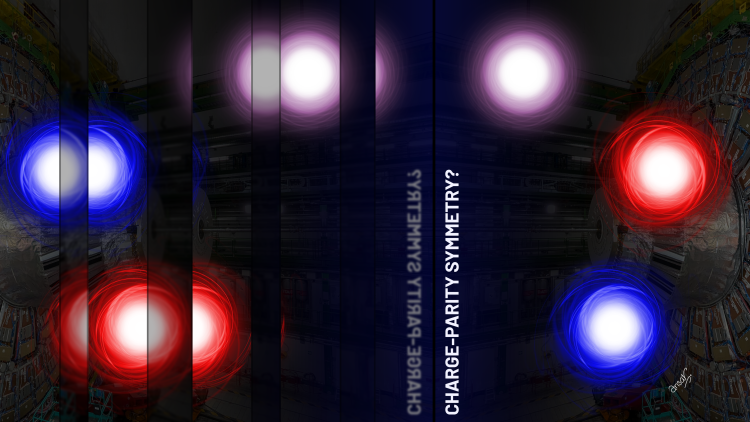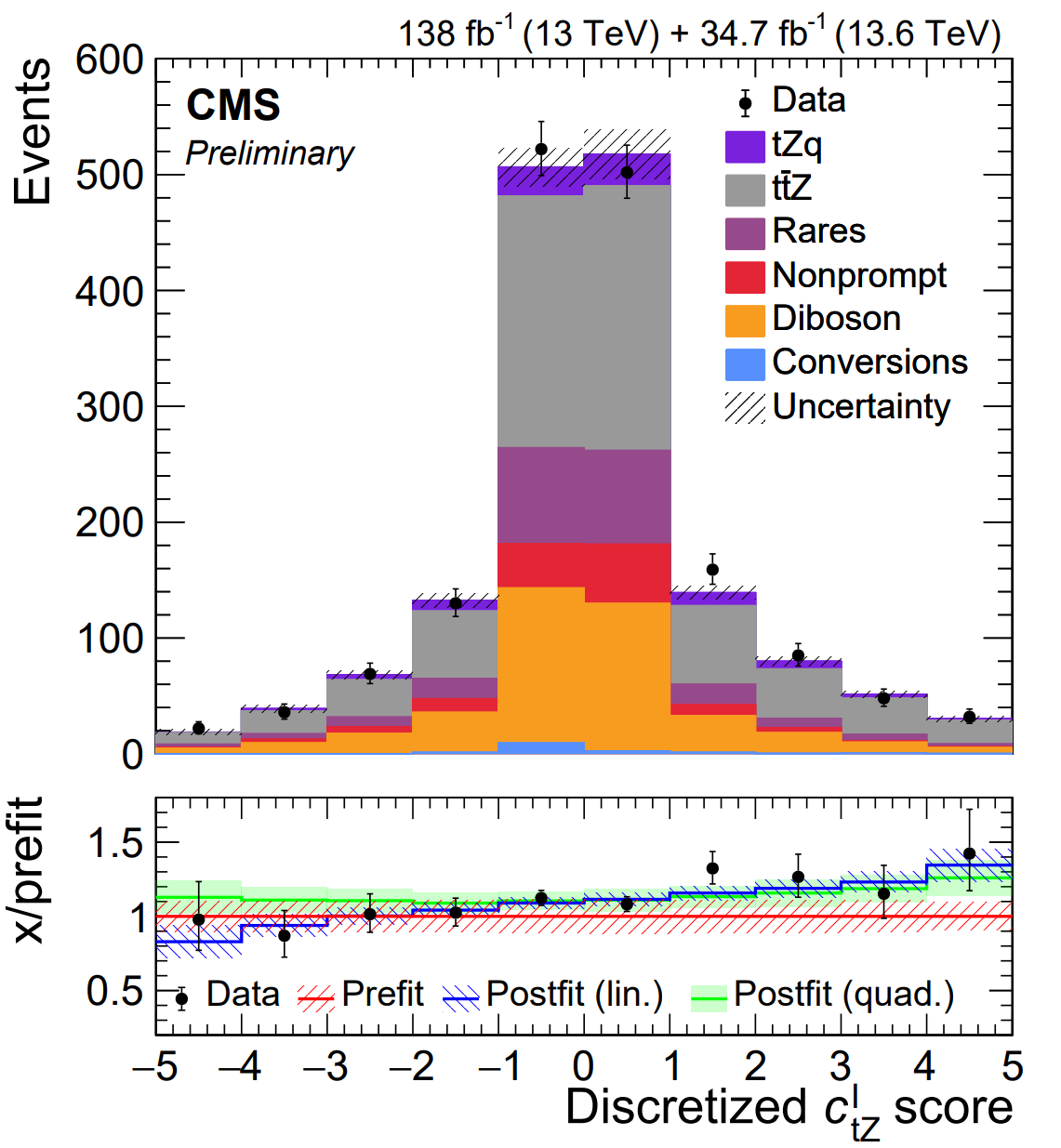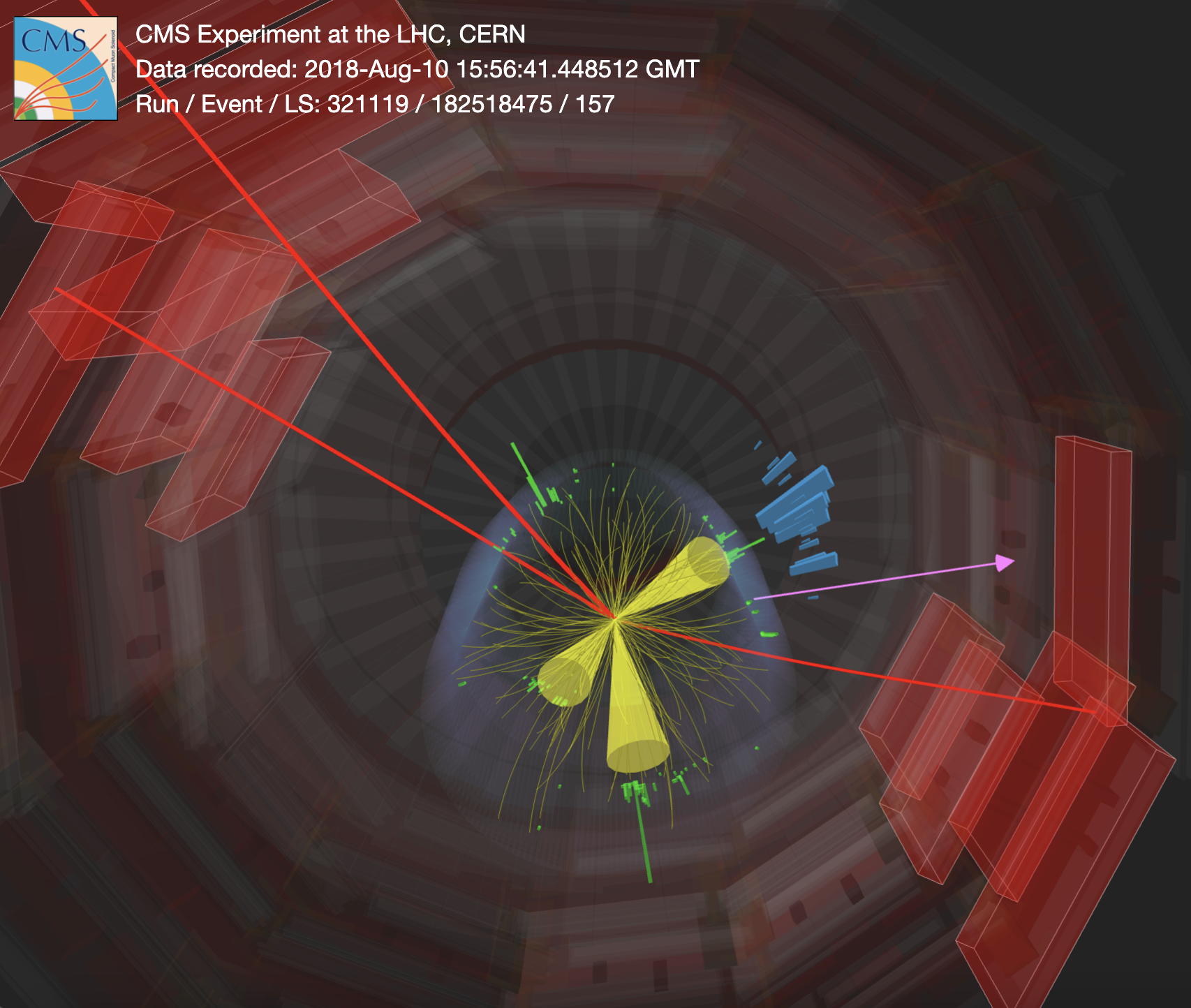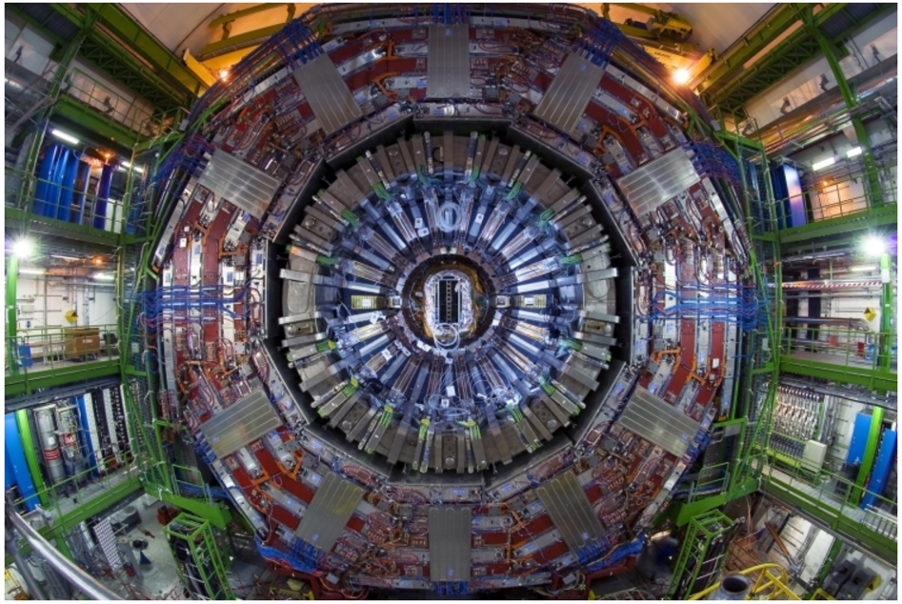
For the first time, the CMS experiment has employed physics-informed machine learning to observe whether the laws of physics still hold true when top quarks and Z bosons are replaced with their antiparticles and space is reflected.
We know the Universe is not just made of "normal" matter but also of antimatter—particles that are identical to their matter counterparts, except for their inverted charge. The existence of antimatter is well established, and scientists routinely produce and study these particles in experiments at CERN’s Large Hadron Collider (LHC).
Yet, one of the Universe’s greatest mysteries is why matter dominates while antimatter is rare. In everyday life, we are surrounded by matter, but antimatter is nowhere to be found. The imbalance suggests that the laws of physics treat matter and antimatter differently, violating what’s known as charge-parity (CP) symmetry. CP symmetry is broken if the physics governing particles changes when we mirror them (parity) and invert their charges (charge). While the Standard Model does allow for some CP violation—as recently studied by CMS (see Crack in the Mirror and Probing matter-antimatter asymmetry with Artificial Intelligence)—it’s not nearly large enough to explain the scarcity of antimatter in the Universe.
This hints at the possibility of new, undiscovered interactions beyond the Standard Model that could break CP symmetry in ways we haven’t yet explored. In a newly released study, the CMS Collaboration investigates whether CP-violating interactions exist between the top quark and the Z and W bosons. The top quark is the heaviest known elementary particle, while the Z and W bosons mediate the electroweak force and are among the heaviest particles themselves.
To probe this, scientists at the CMS experiment analyzed collisions where top quark pairs were produced alongside Z bosons. Using machine learning—specifically neural networks—they examined whether events followed Standard Model predictions or hinted at new CP-violating interactions. A special type of neural network, sensitive to CP violation, was employed: if CP symmetry holds, the distribution of the neural network output (see the figure below) should be symmetric with respect to zero. Any asymmetry could signal new physics at play.

Above: Distribution of one of the neural network’s outputs. The upper panel compares the observed data with the predictions obtained assuming the presence of CP-violating interactions. The bottom panel compares the SM prediction (in red) with data (black dots) and with different forms of CP violation (blue and green). The data is slightly better described by scenarios in which CP violation is introduced, but the statistical uncertainties are still too high to claim the observation of additional sources of CP violation.
The figure shows the most asymmetric distribution observed. Interestingly, data (black dots) is slightly better described when a small CP-violating contribution is included. However, the probability of seeing such an asymmetry under the Standard Model is around 5%—suggestive, but far from conclusive. In particle physics, a 5-sigma threshold (a 1-in-3.5-million probability of being a fluke) is required for discovery, and this result doesn’t yet reach that level.
So, are we seeing the first hints of a new CP-violating interaction, or just a statistical fluctuation? More data is needed to say for sure. Fortunately, LHC Run 3 is well underway; CMS has already collected nearly twice the data used in this study, and CMS scientists are already analyzing it. As analysis continues, we may soon get closer to solving this fundamental puzzle!

Above: Display of an event recorded by the CMS experiment in 2018 that is consistent with the production of a top quark-antiquark pair and a Z boson.
Written by: Sergio Sanchez Cruz, for the CMS Collaboration
Edited by: Muhammad Ansar Iqbal
Read more about these results:
-
CMS Physics Analysis Summary (TOP-24-012): "Search for CP violation in events with top quarks and Z bosons"
-
Display of collision events: CERN CDS
-
@CMSExperiment on social media: Bluesky - Facebook - Instagram - LinkedIn - TikTok - Twitter/X - YouTube

